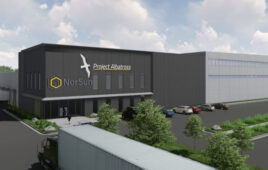SnapNrack, a solar mounting and racking manufacturer, is reconsidering the steps to securing solar modules to residential rooftops. Earlier this year, SnapNrack debuted its TopSpeed solar rooftop mounting system, a solution that attaches to solar modules before they reach the roof. Here to discuss the system’s features is Andrew Wickham, Director of Products and Engineering at SnapNrack.
A written portion of this podcast is below but be sure to listen to the full episode on your favorite podcast service.
What can tell me about the TopSpeed Mounting System as it developed from an idea to a full mounting solution?
So, our new TopSpeed system has actually been an idea we’ve had for the last six years, and it’s been quite the journey to get here. Essentially, when myself and some of the other team members joined the business, we recognized that residential solar mounting was a really interesting thing. People look up at a roof, they see the solar panels. The truth is solar panels are just rectangles of glass — the complexity is what’s happening between the panels and the roof between the solar racking system, mounting system and your module level power electronics, wire management, etc. And one of the first questions I asked when joining the industry is: “Why are you building a system on your roof to attach these sheets of glass to? Why don’t you just get up on the roof and attach the panels to the roof?”
How is TopSpeed different from other products on the market and what differentiates it from other rail-less style systems?
Right now, with the bulk of rail-less systems, and I’ll include SnapNrack’s RL Universal, the products are all very similar on the market. They all have some way to clamp to modules, they have a separate track, or slide for north to south adjustability. Most businesses have a rafter mount version or a deck mount version. But either way, they come in multiple SKUs that are required and you’re actually putting the mounts, tracks, etc., up on the roof first and then bringing the panels up. With TopSpeed, it’s the first system on the market that attaches to the panels on the ground, and so it removes the need for a detailed layout up on the roof and locating those mounts with precision and making sure they’re all in the right place for bringing your panels up, because the system actually builds itself.
According to the tagline, you can “achieve more” by installing at TopSpeed. Can you tell us more about how installers are able to do that?
We’ve now rolled out TopSpeed across the country to multiple installation companies and branches, and what we’re seeing is, of the total solar installation time, upwards of 20% efficiency improvements. And that’s of a total install inclusive of the rooftop PV installation and the ground electrical.
How does TopSpeed affect installer safety?
The truth is the biggest gain is that it takes 75% of the time off the roof. So, now most of the work is being done on the ground between wire management and mounting the mounts to the modules on the ground. It means the installers are on the roof less. The less time an installer is on the roof, the less risk there is of them falling off a roof.
How does TopSpeed benefit a business’ soft costs, such as warehousing, material orders, logistics and so on?
From a material planning perspective, it makes the planners’ and warehousing folks’ lives a lot easier because everything’s coming in a single mount SKU. So, traditionally, with a rail system, you’d have your rail, you’d have your L feet, you’d have your lag screws, you’d have your mid clamps. Those would all be separate SKUs that you’d have to manage. With a rail-less system, you’d have your mount, your track, your screw and potentially spacers. So, with TopSpeed™, it actually comes fully preassembled with the mount, the north south adjustability and the leveling, all in one package.
This podcast is sponsored by SnapNrack






Tell Us What You Think!